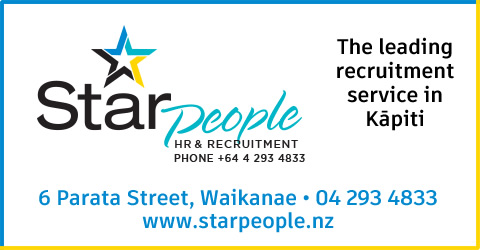
Raumati’s Wharemauku Stream has long been the subject of community concern — a much-loved waterway in need of care but lacking coordinated leadership.
That has now changed, thanks to the drive of Raumati Community Board Chair Bede Laracy and Paekākāriki–Raumati Ward Councillor Sophie Handford, who have sparked a community-led vision for the stream’s future.
“For years, people have said something must be done about the Wharemauku,” says Mr Laracy. “Dedicated groups have worked hard on parts of it, but the awa as a whole has continued to suffer. We wanted to bring everyone together with a shared vision and practical steps for action.”
Whaitua Kāpiti
In October 2024, the Whaitua Kāpiti project delivered its landmark report on freshwater catchments to KCDC, highlighting the poor state of local waterways.
Rather than wait for others to act, Mr Laracy seized the moment. He invited Whaitua Kāpiti Chair Jenny Rowan to present directly to the Raumati Community Board, ensuring that the Wharemauku and Whareroa catchments received local focus.

A Collective Vision
The idea quickly grew into a community-wide hui at Weka Park. Mana whenua, local groups, agencies, and residents came together to imagine the future of the stream.
Illustrator Lisa Richardson captured the conversations in pictures, producing a vision centred on restoring the mana and mauri of the awa — bringing back native fish, the Mauku fern, and deeper connections between people and place.
Building on this momentum, Laracy and Handford convened a coalition including Puketapu Hapū, Friends of Kaitawa Reserve, Friends of the Wharemauku, Whale Song, Kāpiti-Mana Forest & Bird, and Coastlands. Puketapu Hapū provided guidance on the name and pronunciation, and the group called itself Te Wharemauku Awa Ropu.
Partnerships and Long-Term Planning
The group has linked with Victoria University of Wellington through Associate Professor Victoria Chanse, whose students will contribute design ideas as part of their annual landscape design competition. Both Kāpiti Coast District Council and Greater Wellington Regional Council are now working alongside the community collective to map roles, responsibilities, and future workstreams.
“This isn’t a formal agency-led committee,” says Ms Handford. “It’s a network of doers — people supporting each other, advocating for the awa, and connecting the community to the stream’s health.”
Nevertheless, relationships with agencies will be important, and they have connected with both Kāpiti Coast District Council and Greater Wellington Regional Council, who are supportive and keen to work collaboratively. They have also connected with the Wellington Company, who have a development plan that includes redirecting the awa and recreating a wetland.
Looking Ahead
As the project takes on a life of its own, Mr Laracy says he is proud to see local leadership flourishing.
“We’ve helped piece this together, but now the group is standing on its own. That means I can also start focusing on the Whareroa catchment. That catchment will be more challenging, but I believe with the same community spirit we can achieve something just as special.”
For Raumati, Te Wharemauku Awa project is more than a stream clean-up. It’s a model of how grassroots leadership can deliver results where bureaucracy has stalled. It shows how bold ideas, community collaboration, and strong local representation can turn talk into action. Watch this space!






































































